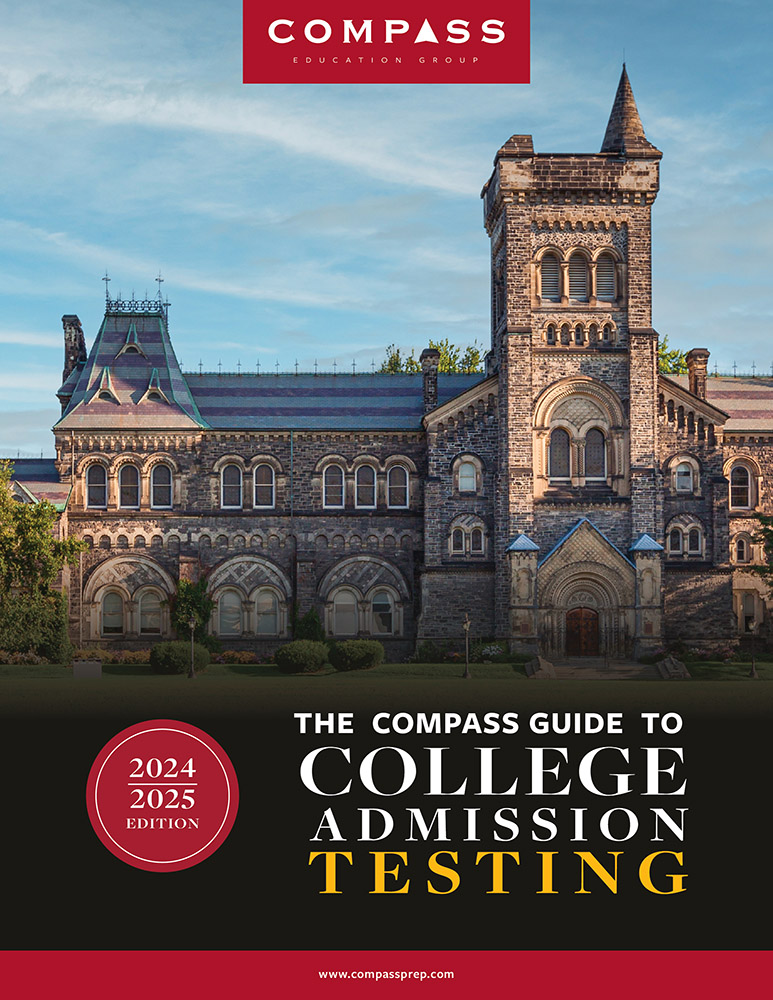
If you’ve read at least one article about upcoming shakeups to college admission testing, chances are it was a piece about the SAT. You know the test, it’s the country’s second most popular college admission exam. Huh? That’s right, but it hasn’t always been that way. So let’s first look back to understand where we are today and what lies ahead — not just with the SAT but with the ACT, too. Maybe that’ll help regain some solid footing. See if you notice a trend.
1926
The SAT debuts as “a psychological test designed primarily to assess aptitude for learning rather than mastery of subjects already learned, and to assess ability independently of any school curriculum.”
1959
The ACT debuts as “a measure of academic preparation; achievement not aptitude.”
2005
A New SAT debuts as “a measure of verbal and mathematical reasoning abilities that students develop over time, both in and out of school.”
2012
David Coleman (“architect” of the Common Core State Standards Initiative) becomes the new president of The College Board and announces plans to remake the SAT. The Redesigned SAT will debut in 2016 as “a reflection of the kinds of meaningful, engaging, rigorous work that students must undertake in the best high school courses being taught today, thereby creating a robust and durable bond between assessment and instruction.”
On the surface at least, the new SAT represents a bold and significant departure from its current form:
- A return to the 1600-point scale
- Formula Scoring (the “guessing penalty”) eliminated
- A non-calculator Math section introduced
- The Essay made optional – and completely overhauled
- Arcane vocabulary reduced
- An ACT-like link to (Common Core) curriculum and academic achievement
With change comes understandable trepidation, but there are also reasons not to fret too much. The SAT has evolved over time but its purpose has not: it will remain a reasonably accurate and reliably predictive tool for college admissions. While content and structure will shift, the normal distribution of scaled scores won’t. The test will continue to recognize preparedness and mastery of core academic fundamentals. And colleges widely support the pedagogical direction the test is headed.
But if this SAT uncertainty is too unnerving, there is a safe alternative in the ACT — the most popular college admission test today. Because after all, that test isn’t changing, right? Or is it . . .
Well, buried beneath the SAT headlines has been some chatter about the ACT changing, too. Recent test takers, for starters, have emerged from test centers describing a test that “seemed harder” than what was expected. In reality, these reports are a little bit right and mostly wrong. Students are reacting to something real, but they are overstating the magnitude. Test-takers tend to have a distorted recollection of a test this long and of their own performance. Unfortunately, at least a couple of recent articles have wrongly validated these suspicions by incorrectly speculating that the ACT is blindsiding students with sudden and seismic changes. So I’ll try to debunk these claims and student misperceptions to set minds at ease.
So, is the ACT about to change, too?
Technically, yes, a little bit. It is not undergoing a “Redesign”, though, like someone else we know. Broad-stroke discussion of change dates back to 2009, but few paid close attention. The upcoming changes mostly involve the addition of new scores. In ACT’s own words, “the changes to the test itself are relatively minor, such that a student taking the exam this year and next year might not notice the difference during the test itself. The score report will have a series of additions to the scores students now receive for each section”. The new scores will include a STEM score, an English score (blending grammar, reading, writing), and other Common Core-inspired metrics. This is ACT checking off their standards boxes in light of SAT changes and Common Core adoption.
The most notable change will be to the Essay in the Fall of 2015. It will yield more granular scores on different aspects of writing, the nature of the prompt will change, and there is a possibility for a small increase in time. While the current assignment calls for a persuasive essay that responds to a single prompt, the new assignment will measure a student’s ability to evaluate multiple perspectives on a complex issue.
And, computer-based testing is being field-tested and will be gradually rolled out.
Has the ACT already changed?
The ACT evolves over time and that’s not unique. No single test entirely reflects what the next test will contain. Test items tend to stay relevant for a number of years but topics fall in and out of favor for good reason. As the ACT explains:
While care is taken to ensure that the basic content structure of the ACT tests remains the same from year to year so that the scores are comparable, the specific allocation of test items to the tests is “fine-tuned” on a yearly basis. Each year, consultant panels are convened to review the new forms of the ACT tests in order to verify their content accuracy and the match of test content to both the content emphasis of the secondary curriculum and the prerequisites for postsecondary course work. Further, curriculum surveys are sent periodically to educators throughout the nation to monitor shifts in the secondary school curriculum and in prerequisites for postsecondary course work. Thus, current information is used when items are selected each year for inclusion in the test.
We shouldn’t overemphasize these vagaries. No one’s score is going to sway much from an extra homophone question. Recent tweaks include things like a slight increase in probability and stats questions, and paired reading passages. The latter appeared for the first time on the June test.
ACT slightly modified its Reading test description two years ago from “the test comprises four prose passages . . .” to ” . . . containing one long or two shorter prose passages . . .” Not earth shattering, but an example of the kind of incremental changes they allow themselves and that we incorporate into our test prep curricula updates. Other modifications to the specs were made to allow for more biography or literary non-fiction. The Aspire has a paired passage and the implementation on the ACT is another bit of Common Core correctness. It will be interesting to see if it is used consistently.
So What’s The Bottom Line?
There is nothing going on that is close to the level of change that the SAT is undertaking. Most ACT problems from this decade could blend in with items from 10+ years ago. If the ACT wants to go down the same road as the College Board, they will revamp and rescale the exam (it has been a quarter of a century, so stay tuned). Right now they are taking an “it ain’t broke” attitude — at least when it comes to the paper tests. As one ACT representative recently said, “We’re the pace-setter now; those guys are trying to keep up!”
The thesis that changes do occur on the ACT is true. The fact that there are some tests that do a better job at the fringes is true. The changes are just nothing like what some folks think of in terms of scale, impact, or change in difficulty.
Concerns about change in difficulty are examined in Part II.

